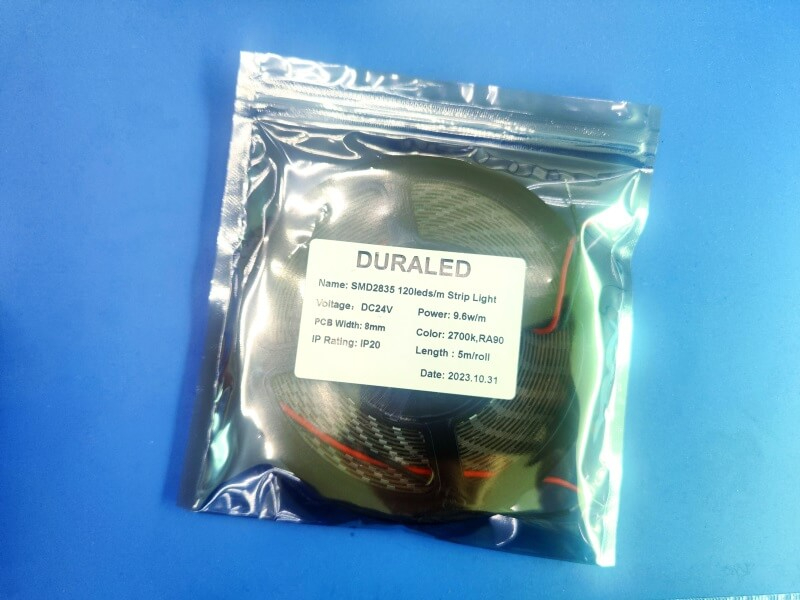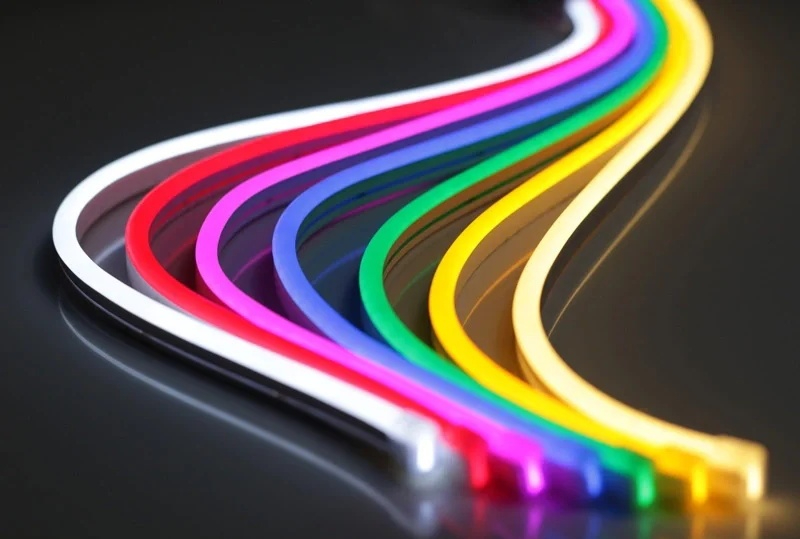High Quality OEM/ODM LED Strip Manufacturer
High Quality OEM/ODM LED Strip Manufacturer
October 18, 2022 789
LED strip lights, also known as LED tape lights or LED ribbon lights, are flexible strips of printed circuit boards embedded with light-emitting diodes (LEDs). They are designed for various lighting applications, providing a linear source of illumination that is both energy-efficient and versatile. LED strip lights have become increasingly popular due to their flexibility, ease of installation, and the ability to create various lighting effects.

LED strip lights have several parameters that describe their performance and characteristics. Here are some common LED strip light parameters and their meanings:
| Parameter | Meaning |
|---|---|
| Voltage | This is the voltage range at which the LED strip operates. Typically, it's a DC voltage. |
| Power | The total power consumption of the LED strip, usually measured in watts (W). |
| Brightness | The luminous intensity of the LED strip, often measured in lumens (lm). |
| Color Temperature | Describes the color tone of the white light produced by the LED strip, measured in Kelvin (K). |
| Color Rendering Index (CRI) | A measure of the LED strip's ability to render colors accurately. Often expressed as an Ra value. |
| LED Type | Describes the type of LEDs used in the LED strip, such as SMD 2835, SMD 5050, etc. |
| IP Rating | Indicates the LED strip's waterproof performance, expressed in an IP (Ingress Protection) rating. |
| LED Count | The number of LEDs per meter or foot on the LED strip. |
| Control Method | Describes how the LED strip is controlled, whether it's manual, remote control, smartphone app, etc. |
| Lifespan | The estimated lifespan of the LED strip, usually measured in hours. |
These parameters may vary depending on the specific model and manufacturer of the LED strip. Depending on your needs and application, you can choose specific parameters to meet your requirements. For instance, you can select a particular color temperature and color rendering index to achieve the desired lighting effect, or choose an IP rating suitable for indoor or outdoor environments. Understanding these parameters can help you select the appropriate LED strip to meet the specific requirements of your project or location.

Single-Color LED Strip: These LED strips emit a single color of light, typically white or a specific color like red, green, or blue. They are often used for general illumination or decoration.
RGB LED Strip: RGB LED strips consist of red, green, and blue LEDs, allowing for the creation of various colors by mixing these primary colors. They are commonly used to create colorful lighting effects, such as color gradients or dynamic effects.
RGBW LED Strip: Similar to RGB LED strips, but with the addition of a white LED, usually warm white or cool white. This provides more options for white light and is suitable for different settings.
Dual White LED Strip: These LED strips include two types of white LEDs, typically warm white and cool white, to provide different color temperature options for lighting.
Digital LED Strip: Digital LED strips have the ability to individually control each LED and are typically used with digital controllers. They are suitable for creating animations, text signs, digital displays, and more.
UV LED Strip: UV LED strips emit ultraviolet light and are commonly used for special effects, night-time decoration, and detection applications.
Waterproof LED Strip: These LED strips come with different waterproof ratings and are suitable for both indoor and outdoor use. They are often used for outdoor landscape lighting and underwater applications.
High-Brightness LED Strip: These LED strips have higher brightness and LED density, making them suitable for applications that require stronger illumination.
COB LED Strip (Chip-on-Board): COB LED strips encapsulate multiple LED chips directly on the same substrate, providing uniform light distribution and higher brightness.
Smart LED Strip: Smart LED strips can be integrated into smart home systems, allowing remote control, scheduling, dimming, and the creation of custom lighting scenes.

High Energy Efficiency: LED strip lights are renowned for their efficient lighting technology, producing more brightness while consuming less electrical power, resulting in lower energy costs.
Long Lifespan: LED strip lights typically have a very long lifespan, often exceeding 50,000 hours, requiring less maintenance and fewer replacements.
Low Heat Emission: LED strip lights generate relatively little heat, making them safer for installation in sensitive areas without the risk of overheating.
Energy Savings: Due to their efficiency, LED strip lights consume less electricity, reducing carbon footprints and contributing to environmental sustainability.
Adjustable Color Temperature: Many LED strip lights offer adjustable color temperatures, allowing you to choose warm or cool white light to meet different lighting needs.
Multiple Color Options: RGB LED strip lights and RGBW LED strip lights provide a wide range of color options for creating various color effects, suitable for decorative and special occasions.
Flexibility: LED strip lights are highly flexible and can be bent, cut, and installed in various locations, accommodating different shapes and designs.
Instant Start: LED strip lights achieve full brightness instantly without the need for warm-up, making them suitable for applications where rapid lighting is required.
Digital Control: Some LED strip lights feature digital control, enabling dimming, color changes, and dynamic effects through remote controls or smartphone apps.
Low Voltage Operation: Most LED strip lights operate at low voltage (typically 12V or 24V), making them safer, especially in residential settings.
Environmental Friendliness: Due to reduced energy consumption and longer lifespans, LED strip lights help reduce waste and reliance on natural resources.
These advantages make LED strip lights an ideal choice for a wide range of lighting projects, including home lighting, commercial lighting, landscape lighting, and special lighting effects applications.
Above is the summary of ZBL Lighting for you about some basic knowledge of LED strip light, as a senior LED strip light manufacturer, we provide a variety of high-quality strip light for the world, if you have a bulk demand, welcome to contact us!
Need professional help? Contact our team for expert support and personalized solutions. We’re here to assist you. Contact Us
